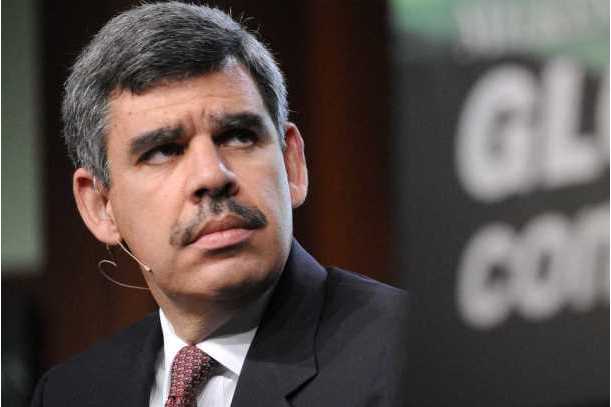Oil’s new normal

Summary
It is hard to see the global oil market’s current configuration of supply and demand rapidly changing any time soon.
Oil prices have been heading south again, with a barrel of US crude recently falling below $42 – the lowest level since March 2009, the nadir of the global financial crisis. And, while last year’s sharp price drop was heavily influenced by two large supply shocks, the current decline also has an important demand dimension.
At the same time, oil markets are discovering what it is like to operate under the regime of a new swing producer: the United States. As a result, the price formation process is much clumsier nowadays, with considerably longer adjustment lags.
The dynamics of the energy markets changed notably as shale-oil production came onstream at a market-moving scale in 2013-2014. With this new source meeting more of world energy demand, particularly in the US, energy users were no longer as dependent on OPEC and other oil producers. In the process, they also became less vulnerable to geopolitical concerns.
Adding to the supply-side changes was Saudi Arabia’s subsequent historic announcement that it would no longer lead OPEC in playing the role of swing producer. It would no longer lower production when prices fell sharply, and increase output in response to large price surges.
That decision was both understandable and rational. Playing the role of swing producer was coming at a growing cost to both current and future generations of Saudi citizens. Non-traditional suppliers had increased their market influence, non-OPEC producers continued to plan high output, and some OPEC members failed to adhere to their production ceilings. Given all this, Saudi Arabia could no longer be expected to incur the growing short- and long-term cost of being the stabilizing market force that it had been for decades.
Such fundamental changes in the supply side of the market naturally drove oil prices lower – a lot lower. Prices plummeted by more than half in a period of just a few months last year, catching many oil traders and analysts by surprise.
Oil prices stabilized after a somewhat temporary overshoot, trading increasingly robustly for a while on the back of two conventional market reactions. First, the large price drop caused massive supply destruction, as some energy producers, from both the traditional and non-traditional sectors, became unprofitable. Second, as consumers reacted to lower energy costs, demand adjusted only gradually.
But a new factor soon disturbed this relative stability, pushing oil prices even lower: Evidence that the global economy was weakening, and that much of the weakening was occurring in relatively energy-intensive countries such as China and Brazil, as well as Russia (itself an energy producer).
Today, indicators of this global slowdown are to be found everywhere – from underwhelming retail and trade data to unanticipated policy responses, including China’s surprise currency devaluation (which coincides with its leaders’ commitment to a long-term shift toward a more market-based exchange-rate regime).
The impact is not limited to economic performance and financial-market movements. Slower global growth is also amplifying political pressures and, in some countries, adding to social strains – both of which tend to constrain policy responses.
It is hard to see the global oil market’s current configuration of supply and demand rapidly changing any time soon. As for the new swing producer, the US has a much slower (and leakier) reaction function relative to that of Saudi Arabia and OPEC.
Over the next few months, the US will indeed alter its supply and demand conditions in a way that puts a floor under oil prices and enables a gradual recovery in the market. But, unlike the previous swing producer, this will result from traditional market forces, not policy decisions.
Indeed, we should expect an even sharper reduction in US energy output as persistently low prices increase the pressure on domestic producers. From the shutdown of additional rigs to the curtailment of new investment in exploiting shale resources, the US will likely experience a fall in its absolute energy production, as well as in its share of world output.
But, while demand will increase, this will not have much of an immediate effect on oil prices. Yes, US consumers will be tempted to buy more trucks and bigger cars, drive more miles, and fly to more places. But the creation of this demand will be very gradual, especially given all the leakages in the transmission of lower energy-input costs to consumer fuel prices.
At the end of the day, no swing producer controls the fate of today’s oil prices. A sustained price recovery requires a healthier global economy that combines faster inclusive growth and greater financial stability. And this will not occur quickly, especially given the policy shortcomings in both advanced and emerging countries.
Mohamed A. El-Erian, Chief Economic Adviser at Allianz and a member of its International Executive Committee, is Chairman of US President Barack Obama’s Global Development Council. He previously served as CEO and co-Chief Investment Officer of PIMCO. Copyright Project Syndicate
Related
-
Renewable energy jobs hit 12.7 million globally
Africa’s role is still limited, but the report points out that there are growing job opportunities in decentralized ...
-
IFC, DFID partner to boost solar investment in Nigeria
Eme Essien Lore: "The solar market has the potential for quick wins in bringing access to electricity for more businesses ...
-
Africa accounts for 0.6% jobs in global renewable energy sector – IRENA
A new IRENA report shows the renewable energy sector employed 9.8 million people worldwide in 2016.










